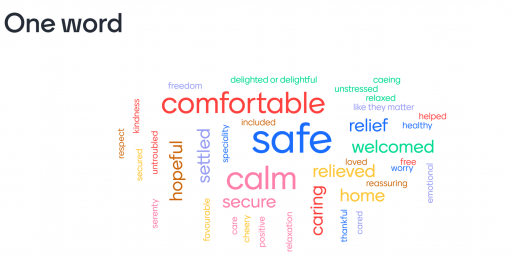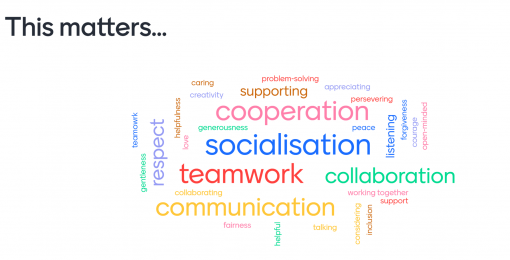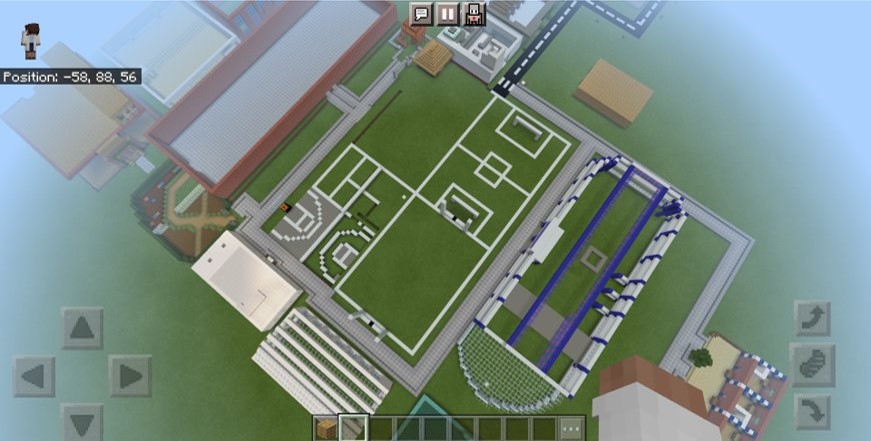Year 6 Library Learning – Immigration Detention Centres.
The learning intention was for students to understand that society’s view of immigration detention centres has changed over time, and explore options for improving the centres. Skills of communication and collaboration were also a focus.
Our first priority was to ensure a common understanding of immigration centres within Australia. To achieve this, students were assigned a closed question and asked to independently locate a website that would provide the answer to that question.
Questions included:
- What is a detention centre?
- Why did the Australian government introduce detention centres?
- Who is placed in a dentition centre?
- Where are the Australian detention centres located?
- What are the living conditions like in a detention centre?
Each student was required to paste a link to their website in a table in OneNote.
4-5 students were given the same closed question. Once all links were added to the table students that had been given the same closed question came together as group to analyse their findings:
- Did they find the same site?
- Was the information provided by each site the same? (This introduced the concept of cross-referencing)
- Were some sites easier to navigate then others?
- Were some sites more suited to students in terms of vocabulary?
How reliable was the information?
The group considered all sources of information then wrote one group response to the original question. This response was added to the table, alongside the website links, in OneNote. As a class, students reviewed the responses and clarified any questions. We then used the relevant resources to create a collection in Edge for future reference.
Next…this question was posed:
As the conversation about the need for detention centres continues think….is there a better way to detain asylum seekers?
We sourced and read information about ‘gated communities’. We defined a ‘gated community’ as a neighbourhood that had controlled access with one or more gates that residents and visitors must pass through. They can range in size and are often used by the wealthy to live a protected lifestyle.
So we pondered:
What if a gated community was designed to keep people ‘in’ instead of ‘out’? Could we use the gated community model to rethink what an immigration detention centre is like?
As a class we brainstormed what might be included in an immigration detention centre if it was built using the ‘gated community’ model (school, medical centre, recreation, security).
We decided that as a class (30 students) we would build one gated community. This opened up opportunities to truly focus on the 21CLD skill of collaboration. Collaborative planning would be key to success. Our initial step was to agree on what would be included and the purpose for each inclusion. One student suggested a road for ‘racing cars’ because that would be great for entertainment. Initially we said no because it wasn’t essential and raised a number of safety concerns. However, we reconsidered the idea and as a class we decided it would be good if asylum seekers could learn to drive in a controlled and safe environment, so a track for learner drivers was included. The ability to communicate ideas succinctly and persuasively is an important skill and this project relied on it.
Once the mindmap of essential features was completed, the class drafted a design for the layout of the gated community. After agreeing to the design, all the plans and notes were uploaded into a class TEAM. This enabled the students to refer to them as required.
Next, a teacher hosted Minecraft world was established and students were allowed to commence building their nominated structure within that world. Students soon realised that further discussion was required as to how big they should make their structure and ‘where’ it sat in relation to the plan and other structures. This discussion was rich and required true collaboration. The decision was made to place the blocks for the centre oval first – indicating its size and position. The students could then work ‘out’ from that space. They were required to have ongoing discussions with students building near them to ensure their structures would fit. Two students were assigned to each building structure to further develop the skills of collaboration, co-operation, and teamwork. The students could only build during class time when the teacher was logged into Minecraft. This ensured that all students were equal contributors to the world. It was a fabulous task for collaboration and communication.
To gain a snapshot of learning I asked the students to provide one word that described how they hoped asylum seekers would feel in their gated community. The words were added to a word cloud with the most popular responses being safe, calm, comfortable and secure. How reassuring to have our 12 year old future citizens wanting this for other members of our community.

I repeated the word cloud task asking students ‘what matters’ when working in a group and the top responses were cooperation, socialisation, collaboration, teamwork and communication. I loved the response of one student – courage. As a class we chatted about the courage that is sometimes needed within a group if you want to voice your opinion. We want our students to have courage – we want to empower them to make a difference. Our lesson designs should always aim to provide this opportunity.

To extend the learning once the new detention centre is completed students could individually creat a response explaining why the gated community model should be used for detention centres. Options for their response (although not limited to these) could include:
- Flipgrid – imagine you have 5 mins in Parliament to sell your new look detention centre to the members of parliament. What would you say?
- Minecraft Walk Through – screen record (PowerPoint) a walk through the Minecraft world highlighting the benefits of the new look detention centre
- Video Editor – create a promotional video for the community highlighting the benefits of the new look detention centres
- Book Creator – use still shots from Minecraft world to create an ebook proposal to share with the community.
After completing the response students may ‘pair and share’ to receive feedback and make changes if desired.
Reflecting on the task against the 21CLD capability rubrics:
Collaboration is embedded throughout the project
- Learners DO work together in pairs or groups
- AND they DO have shared responsibility
- AND they DO make substantive decisions together about the purpose, content, process, or product of their work
- AND their work is interdependent
Skilful Communication is developed via sharing of thoughts during and at the conclusion of the project
- Learners ARE required to produce coherent communication in a range of communication forms
- AND they ARE required to design their communication for a particular audience
- AND learners ARE required to produce substantive, multi-modal communication.
- AND they ARE required to reflect on and use the process of their learning to develop and improve their communication.
MinecraftEDU was without doubt the hook that captured the imagination of the students, but as the project evolved, they became deeply involved in thinking about how we as a society deal with asylum seekers. A great unit for helping our students to become thoughtful, reflective citizens that focus on solutions to community issues.

